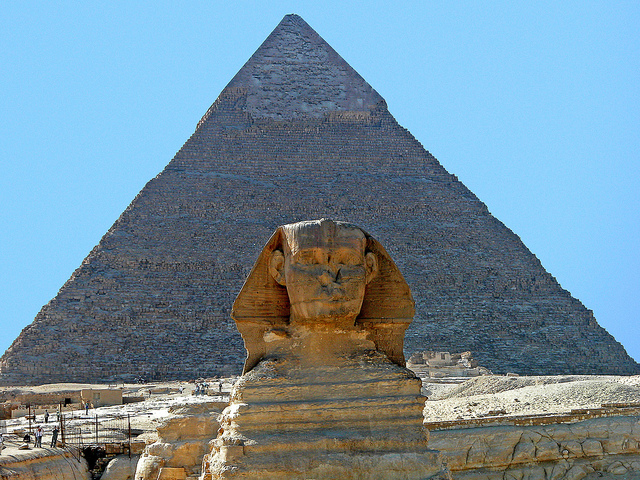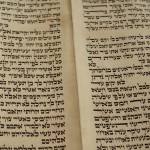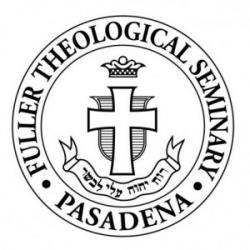This is the third installment of a series of posts by Dr. Yong on the theme of the “Holy Spirit and Mission in Canonical Perspective.” To see all posts in this series, click here.
Exodus 15:8, 10 – The Wind and Breath of Yahweh: Liberation and Mission
There are at least three trajectories of missiological readings of the book of Exodus. In the next chapter we will look at that which links the Sinaitic covenant with Israel’s witness to the nations. The other two are intertwined, involving Israel’s liberation from Egypt and Israel’s mission in or to Egypt.
That the missiological theme of Israel’s deliverance – indeed, exodus (as the book is called) – from Egypt has in the last generation been championed by liberation theologians should not thereby be dismissed by those who approach the Bible from other methodological commitments. Liberation readings of the scriptures have drawn deeply from the Exodus narrative to explicate how God delivers his people, whether spiritually or historically, from the many ways in which human beings live under subjugation. More recent postcolonial interpretations have also suggested that the people of God ought not to identify only with the Israelites or Hebrews over and against their Egyptian oppressors; instead, in the contemporary western world more often than not affluent Christians have more in common with imperial Egyptians than with the Hebrew slaves, and liberation hence involves experiencing salvation at least as much from within, rather than escaping from, the prevailing domination system.
In fact, the second, more minority report, picks up on this theme of God’s liberative mission in and to Egypt. From this perspective, the entire sequence of events related to Israel’s sojourn in Egypt (see the last chapter) and then God’s rescuing them from the hands of the Pharaoh through a series of plagues is so that, apart from the reasons related to Israel’s restoration, all of the “Egyptians shall know that I am the Lord” (Ex. 7:5). Thus there appears to have been an open invitation for Egyptians to leave with the Hebrews and even some indication that at least a few did so (Ex. 12:38; cf. Lev. 24:10). Perhaps this explains the need for guidelines for non-Hebrew participation in the Passover celebration (12:43-45). In any case, the exodus thereby includes not only Hebrews but also others within the Egyptian regime, and such a mission through Israel is also consistent with and anticipates the final and eschatological redemption of Egypt (cf. Is. 19:18-25).
It is against this backdrop that two oblique references to the breath of Yahweh provide some pneumatological perspective on the exodus. These appear in the so-called “The Song of the Sea” (Ex. 15:1-19, to which the appended two verses by Miriam and the women may actually have been the earliest version of the Song), which not only commemorates but also summarizes, within a worship or cultic context, Yahweh’s deliverance. In the middle of the victorious celebration, these words are sung:
At the blast of your nostrils [wōbĕrûaḥ ʾapêkā] the waters piled up,
the floods stood up in a heap;
the deeps congealed in the heart of the sea….
You blew with your wind [nāšappĕtta bĕrûḥăkā], the sea covered them;
they sank like lead in the mighty waters (Ex. 15:8, 10).
If this Song belongs to an earlier rather than later (post-monarchial or even post-exilic) strata of Israel’s history, then there are good reasons to stay with the more figurative understandings that equate Yahweh’s breath and wind with the natural elements that both made a way for the Hebrews’ escape (through the Red Sea – Ex. 14:21-22) and destroyed their Egyptian pursuers (14:23-31). On the other hand, it is also precisely as a reference to Yahweh’s power that the divine breath and wind achieved release for the people of God, and it is this power that becomes central to later biblical pneumatology.

A number of considerations emerge when such pneumatological cues are foregrounded. To be sure, the breath of Yahweh is not only creative and liberative (or redemptive) but also associated with the divine judgment, themes that we have already identified in the first book of the Torah (see chapter 1 above). Yet if in the primeval history withdrawal of the divine breath precipitates the flood and its judgment of inundation, here it is the fury of the divine wind that activates the waters of the sea and executes the judgment that overcomes and overpowers. How then might we understand the mission of the Spirit if such a liberative pneumatology is also destructive, even of the human life that God desires not to perish? At least three lines of reflection present themselves.
First, the breath of God that liberates through wind and water does so in order that the people of God can be redeemed from slavery to experience God’s salvation. The Song of Moses uses these metaphors – that Yahweh is not only warrior (15:3) but also lover, protector, shepherd, and tender of plantations (15:17) – even as it anticipates the later conquest of Canaan (the land promised to Israel’s ancestors). In other words, the Spirit who saves is also the Spirit who sanctifies, and redemption involves not only deliverance from but also transformation to being God’s special possession. That the Song of Moses associates Yahweh’s liberative acts with the divine wind and breath indicates that salvation as encountered in human history is indeed accomplishable only by God, indeed the very being, even spirit, of the living God. Neither Israel nor the Egyptians that experienced liberation were able to orchestra emancipation through the wind and water. Only God saves through his own strength and might and therefore only God is to be praised and exalted (15:2).
Relatedly, then, salvation can only come from out of the depths of destruction and so in that case, mission emerges from out of the darkest moments of human tragedy and lostness. Thus it is declared: “And the Egyptians shall know that I am the Lord, when I have gained glory for myself over Pharaoh, his chariots, and his chariot drivers” (Ex. 14:14) – so that it is in a sense only through realization of their own doom that the Egyptians come to realize Yahweh as even their own deliverer. What is condemned and judged, however, are not Egyptians as Egyptians, but Egyptians as representative of a posture opposed to Yahweh’s willful call of Israel to worship in the desert (15:9). In this sense, then, the exodus provides a message not only for Egyptians but also for Moses and Israel, so that the people of God come to realize Yahweh’s that deliverance and salvation are the flip side of Yahweh’s judgment. But the point I wish to press here is that the wind of Yahweh not only liberates human subjects but does so using the Sea, the very means of purification and judgment. In effect, the “subterranean waters,” which according to ancient Near Eastern myth represented the chaotic deity of the Sea, is hereby the conduit of Israel’s liberation. The paradox then is that the wind of God accomplishes divine judgment even as it redemptively breathes life from out of that death.
And this leads, for our purposes, to the pneumatological theme that connects the divine wind both to the waters that destroy and purify and to the breaths that resound in celebrative praise as a witness to the nations. On the one hand, the voices rejoicing over the victory wrought by Yahweh over the Egyptians acknowledge that it is his powerful breath that has delivered them through the Sea. On the other hand, these same voices extol, within a worshipping environment, the majesty, holiness, awesomeness, splendor, and wondrousness of Yahweh, declaring, “Who is like you, O Lord, among the gods?” (15:11), not only to the Egyptians in and surrounding their midst, but also to Edomites, Moabites, and Canaanites, among other people to whom Israel is called to witness (15:15). Thus the waters of destruction are also thereby understood as nothing less than the vaporous winds of Yahweh’s redemptive acts, even as the latter is also the life-giving breath that enables human praise to ascend so that the nations might know and that God may be enthroned in his cosmic sanctuary and “reign for ever and ever” (15:18).
Amos Yong came to Fuller Seminary in July 2014 from Regent University School of Divinity, where he taught for nine years, serving most recently as J. Rodman Williams Professor of Theology and dean. Prior to that he was on the faculty at Bethel University in St. Paul, Bethany College of the Assemblies of God, and served as a pastor and worked in Social and Health Services in Vancouver, Washington. Yong’s scholarship has been foundational in Pentecostal theology, interacting with both traditional theological traditions and contemporary contextual theologies—dealing with such themes as the theologies of Christian-Buddhist dialogue, of disability, of hospitality, and of the mission of God. He has authored or edited over 30 volumes.
Follow Fuller Seminary on Twitter at @fullerseminary.















